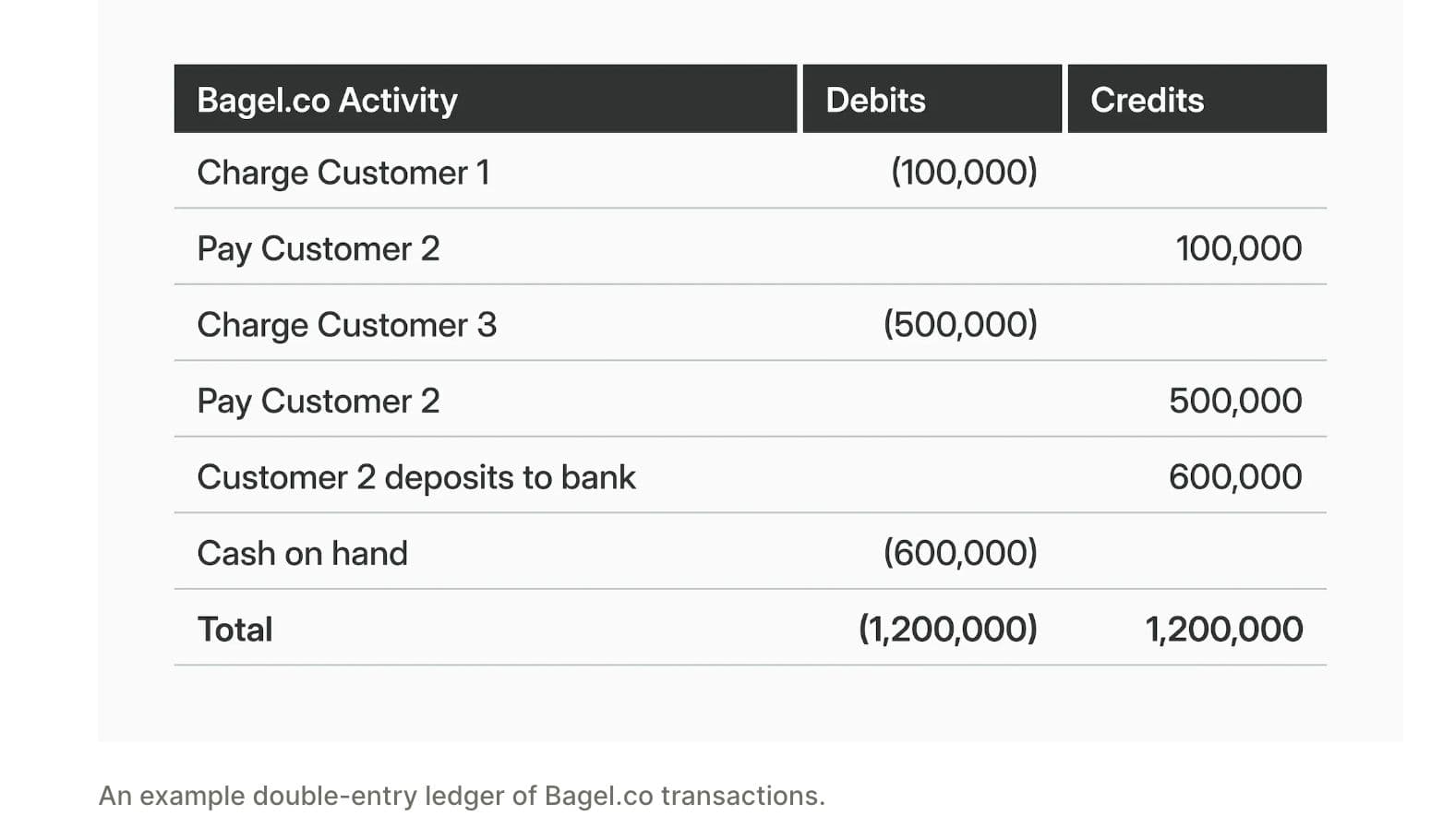Modern Treasury and Paxos Make It Easier for Businesses to Move Money with Stablecoins.Learn more →
What are the three golden rules of accounting?
The three golden rules of accounting are (1) debit all expenses and losses, credit all incomes and gains, (2) debit the receiver, credit the giver, and (3) debit what comes in, credit what goes out. These rules are the basis of double-entry accounting, first attributed to Luca Pacioli.
One way to put these golden rules into practice for programmatic money movement is a double-entry ledger, as shown below for fictional company Bagel.co.
Imagine Bagel.co allows users to buy, sell, and trade bagels, moving funds between accounts the company operates on behalf of customers. Supposing three customers (1) buy and sell bagels to each other, and (2) cash out the balances of their accounts on Bagel.co’s platform to external banks, below is an example double-entry ledger of their transactions.

Learn more
Bank reconciliation is the process of verifying the completeness of a transaction through matching a company’s balance sheet to their bank statement.
Read more
The four steps in bank reconciliation are (1) accessing and comparing deposits between a company’s bank statement and its internal systems of record, (2) normalizing the bank statement as needed, (3) formatting of data from internal systems of record, and (4) comparing the bank statement and internal records to confirm a match.
The main purpose of bank reconciliation is to ensure that a company’s finances are correctly documented. Especially for companies that move money, this process helps guarantee product accuracy and correct internal bookkeeping.
Yes, bank reconciliation can be difficult, especially at scale. Primary difficulties stem from bank payment delays, the challenge of normalizing payments and bank data, and the need to match a high volume of transactions quickly.
To practice bank reconciliation, businesses may rely on manual processes, automating software, or some combination of the two. Regardless of process, bank reconciliation will always involved these four steps.
Read more
If bank reconciliation doesn’t balance, an error of some kind is indicated—be it a numerical mistake, oversight, or duplication, a human error in comparison or adjustment, or a software problem.
Reconciling an account involves comparing financial records to ensure a balance is complete and accurate—most commonly, comparing the general ledger balance of an account against an additional external or internal system of record.